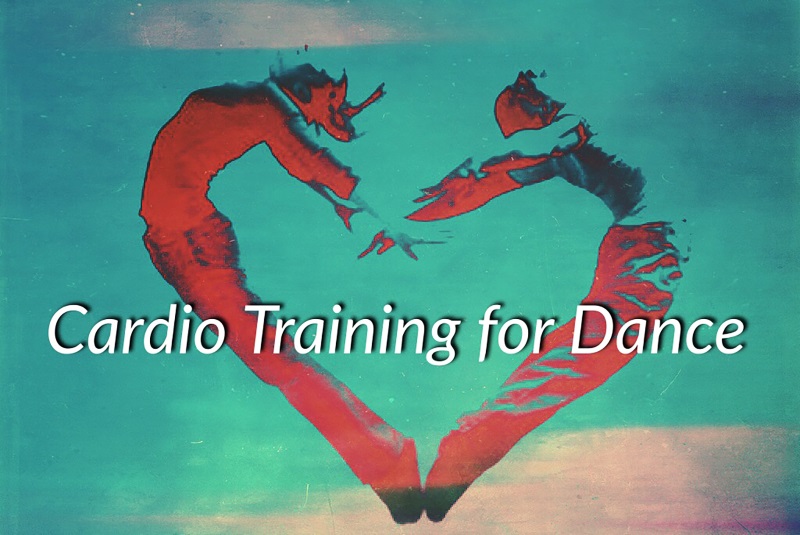Strength, Fitness & Flexibility Training for Dance: Part 1 of 3

PART 1 - Cardio Training for Dancers
In this series of blog posts we are going to build up your knowledge and understanding of strength, fitness and flexibility for dancers. By the end of this series you will have a raft of new knowledge and understanding about the importance of certain aspects of dance training and the body.
This first blog post in the series deals with basic information about cardiovascular exercise for dance, covers why it is important, and why it shouldn't be avoided.
No one is in any doubt that dancers spend a whole lot of time being physically active, however the type of exertion demonstrated through dance training and dance performance is typically anaerobic in nature. This means that there are a lot of short periods of high intensity movement. For a dancer to be holistically physically fit, it is important that throughout their training and development, they engage in aerobic exercise. To ensure the adequate development of good cardiovascular fitness, there are a number of things dancers need to be conscious of:
- Dance training doesn't always develop good cardiovascular fitness, because of the structure of technique classes and traditional teaching practices. They tend to start and stop which will always promote anaerobic development and not aerobic improvement.
- Dancers often don’t take enough rest time, and suffer from burn-out, meaning they are less likely to engage in additional cardiovascular training in addition to their classes.
- Holistic health and fitness are essential to a long and fruitful career, and as a result dancers should ensure that they have a well rounded training which includes rest and leisure time.
So, if there are a number of pitfalls by not including an adequate amount of cardiovascular exercise into a dancer’s life, what are the benefits?
- Cardiovascular exercise improves overall stamina and posture.
- Reduces the risk of fatigue.
- Improves focus and concentration.
- Reduces the risk of injury.
- Improves overall performance ability through increased stamina and engagement.
- Boosts the immune system.
- Improves muscle control.
So why do so many dancers and dance teachers avoid cardiovascular exercise as either part of or in addition to their training regime? There are a number of reasons, including time, burn-out and fatigue. This, coupled with a number of dance-related myths, can sway a dancer to avoid including it in their schedule of training. Some of those myths are:
- Cardiovascular exercise will build heavy and bulky muscles. The fact is that when the correct exercises are employed, you will develop longer, stronger and more elegant muscle structures appropriate to the dance form.
- Taking more technique classes, specifically ballet, is the only true way to improve your dance skill. This is a difficult one as elite and old school practitioners will still advocate this. If you are only taking part in one technique class each week, then absolutely take more technical classes. However, if you are taking numerous technique classes daily then the utilisation of a cross-training method rather than increasing the number of technical classes will promote the development of both strength and control appropriate to dance.
- Strength training is only for boys and it doesn't have any benefit for girls. Strength training has a number of benefits for girls, just as it does for boys, including injury prevention, increased bone density, improved range of motion, increased lean muscle mass and enhanced performance.
- Cardiovascular training results in a loss of flexibility. In fact, the range of motion in the muscles and joints will be improved. Furthermore, it improves the dancer’s ability to sense movement within joints and joint position. This ability enables us to know where our limbs are in space without having to look. This will improve balance, turns and flexibility all at the same time.
There are a number of ways a dancer can improve and develop their cardiovascular fitness, and it is always up to the dancer which is most appropriate to them. It seems counterproductive to jog for 30-45 minutes when that type of training is the least related to how they will then utilise that training. Interval training has proved to be a very productive method for dancers.
Interval training is constructed of periods of high intensity training interspersed with periods of low intensity resting movement, and can include exercises such as jogging, skipping, cycling, swimming, burpees, jumping jacks, etc. During the workout you give one hundred percent effort through quick, intensive bursts of exercise, followed by short recovery periods.
When including cardiovascular training into a dance training environment it is best to be undertaken as the tail end of a technique or performance class which incorporates a longer travelling or allegro combination. It is ideal if these sequences last approximately 48 bars. The class can be split into groups so that while one performs, the other group rests. This allows the incorporation of interval style training as part of a dance class.
Whatever method the dancer or teacher chooses to incorporate cardiovascular training into their workout, it is vital that they make time and effort to include it. If they can do so and do so successfully then the dancer will find they are able to train smarter with more recuperation and leisure time.










